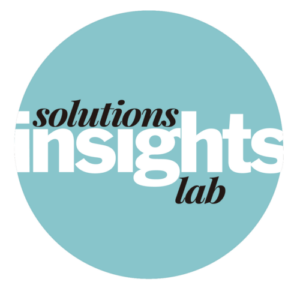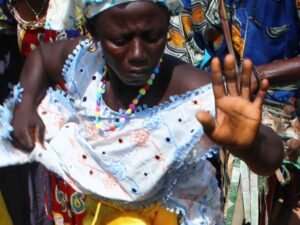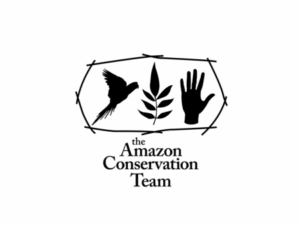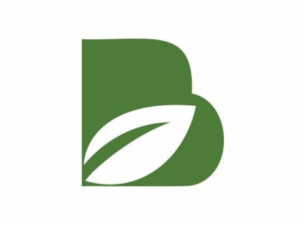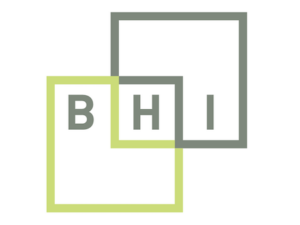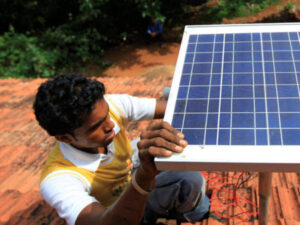Global Roundtable for Sustainable Beef advances, supports, and communicates continuous improvement in sustainability of the global beef value chain through leadership, science, and multi-stakeholder engagement and collaboration.
Ruaraidh Petre from Global Roundtable for Sustainable Beef spoke with Ambika Samarthya-Howard on October 6, 2025. Click here to download and read the full interview.
Ambika Samarthya-Howard: Can you start by introducing yourself and your organization?
Ruaraidh Petre: My name is Ruaraidh Petre, and I’m the executive director of GRSB [Global Roundtable for Sustainable Beef]. What we do is we convene all of the stakeholders in the beef value chain. We’re global, and we cover 24 countries, all of which have significant beef production systems or are importing beef. It’s mostly producer countries.
Ambika Samarthya-Howard: Are producer countries the countries that have the cattle?
Ruaraidh Petre: Yes, that’s correct. When I talk about the whole chain, I’m talking about the actual farmers and ranchers or pastoralists who’ve got cattle. I’m talking about the associations of those farmers and ranchers. I’m talking about abattoirs, so the processing companies, slaughterhouses, and further processing. Then we’ve got the input providers. That would be anybody who’s selling things to farmers or taking things from farmers. You’ve got banks that are providing finance, you’ve got pharmaceutical companies that are selling medicines. You’ve got feed and fertilizer.
Then we’ve got the leather industry and the dairy industry, which are part of the same ecosystem. Next step along, we’ve got the retailers, which could be restaurants or supermarket retailers. We’ve got civil society, which includes NGOs, non-profits, and academia. Academia is important because they’re bringing research, they’re bringing modeling, and they’re bringing things that some of the others don’t do. Finally, we have the country-level initiatives. They’re similar to us, but instead of being global, they’re for that country.
That’s really important because they will have a network within that one country, which is bigger than what we’ve got. They will be focused on the specific issues that are taking place in that country, the specific production system, and, for example, the legislation. In every country, you’ve got a different legislative framework to deal with cattle production. That’s why it’s important to have those national initiatives.
Ambika Samarthya-Howard: Every single country has such different laws and regulations. How are you able to work through this globally? I understand that you’re bringing the conveners together, but they’re coming from such different regulatory systems.
Ruaraidh Petre: We set an umbrella. We have principles and criteria that cover all the things that you might expect: natural resources, animal health and welfare, people and the community, food, efficiency and innovation. Then, underneath those, we’ve got criteria, which drill a little bit further down. The national groups prioritize different criteria. One priority, for example, is to avoid and stop deforestation. Now, in the United States and Canada, deforestation is not a significant issue. For Paraguay and Brazil, it’s probably the biggest issue they’ve got. They’re going to prioritize focusing on deforestation, whereas the US and Canada are probably going to look at the conversion of grasslands; that’s more important to them.
Ambika Samarthya-Howard: Do the national folks all work separately, talk to each other, and then feed into the international?
Ruaraidh Petre: There are 24 countries, but they’re split between 13 roundtables. Some of them have several members, and the whole constituency of national roundtables has four seats on our board, so they’re present in all of our meetings. They rotate between them, and they can be present at any meeting, as they’re included as a member at any time.
They also have a constituency meeting. Once a month or so, just the roundtables will get together and talk about the things they’re doing and share information. Uruguay has been doing a lot of work on sustainability, but they only joined this network a year ago. They were given a lot of help from others, who’ve been there for longer, in terms of how to set it up, how to report, and so on. There’s a lot of assistance between countries, but there are also ladders leading up to the global level.
Ambika Samarthya-Howard: Can you talk a bit more about the work that you’re doing with grocery stores, as well as the work you’re doing within the supply chain? There are so few people I know doing that work, and it seems to be the last piece of the puzzle in many ways.
Ruaraidh Petre: You’ve got the producers, but at the end of the day, you’ve got to create that link between the producers and the people who end up selling the product.
We have retailers, predominantly people like McDonald’s and Burger King, but we have some retail chains, and they’re bigger in the national roundtables, I’d say. The supermarkets we have are Woolworths in Australia and Lidl, but there aren’t many. They’re mostly participating at the national roundtable because a lot of those retail and supermarket chains don’t operate in multiple markets. They’re only operating in one or two.
Walmart, for example, is involved in several different roundtables. They’re in the Brazilian one, they’re in the US one, and they’re in the Canadian one. That links up where they’re buying meat with where they’re selling meat. The other organization that we have a close link with is the Consumer Goods Forum, and they’ve got about 450 retailers and brands. They’re not all supermarkets. It will include companies like Nike, who doesn’t have a lot of [direct] connection with their supply chain, but they do have connections through the Consumer Goods Forum and through their relationship with GRSB.
Nike is obviously not selling beef, but they’re selling leather. They’re interested in knowing that their leather is not causing deforestation. The Consumer Goods Forum is an important link to those brands, because most of them don’t have a lot of insight into where they’re buying beef from, and they just want a solution. They don’t have big enough teams to get into the weeds on what the cattle supply chain looks like. They want to buy beef or leather, they want to make sure it’s sustainable, and they want someone else to solve that problem for them. That’s what the Consumer Goods Forum is trying to do. They don’t have a link with the supply chain; we do, so that’s where we come in.
Ambika Samarthya-Howard: Can you solve that problem for them?
Ruaraidh Petre: We can help by creating introductions to the companies that are members of GRSB. Our network extends into all of those producing areas, including areas where there is deforestation happening, like Brazil and Paraguay. Our connections through the processors and the producer associations are the way to create the linkage.
Ambika Samarthya-Howard: Can you take me through an example of that? If a person comes to you and says, We want to change the way the supply chain is working, or we want to make sure our beef is sustainable, what is the next step you take?
Ruaraidh Petre: They literally may not know where that beef comes from. They’re traders. Typically, in Europe and the United States, there are people who are just import-export. They’re not doing processing. They’re not doing anything else. It’s an important part of the chain, but it’s by no means the only part. They couldn’t exist without the exporters.
Now, if you look at Brazil, there are three big exporters: JBS, Minerva, and Marfrig. There are many smaller ones, but those three account for the majority of beef exported from Brazil by far, and even from the whole of Latin America. You know that those companies are connected to where your beef is coming from.
A recent example of a project is that retail chains are working directly with those processors, who are clearly just buying from throughout the area. Both Marfrig and JBS have quite significant insight into their supply chains. It’s not perfect because Brazil doesn’t have a national traceability system, but they are working and they’re creating funds and things like that to support better insight into the Brazilian supply chain. I would say it’s not moving as fast as everybody would like it to, but they are investing significant amounts into it. We have to recognize there are still gaps.
When a retailer or a supermarket comes along and says to JBS, we want to support a project, then that can go through the fund that JBS has, which is this Amazon fund. That can produce maps of all of the producers they have. They’ve also got a list of blacklisted producers, which is maintained by the Cadastral Register of Brazil, so they have an idea of where all the beef farms are, and where there is known to be deforestation. Then, JBS needs to make sure that all of those blacklisted farms are excluded from their supply chain. That’s where the problem that I talked about, traceability, comes in. If somebody has moved cattle from a blacklisted farm to a non-blacklisted farm, it’s very difficult to establish what has happened. We need better traceability.
TNC [The Nature Conservancy], WWF [World Wildlife Federation], Earth Innovation Fund, Produzindo Certo, and others are working on better traceability systems with individual animal identification, which will show where an animal was born. Once you’ve got that, as long as you log every movement that an animal makes, you can demonstrate that an animal has not been on a property where there was deforestation. These last couple of years, the EUDR [European Union Deforestation Regulation] has been having a significant impact in terms of providing an impetus to get better traceability, because if you don’t have traceability, you cannot sell to Europe.
Ambika Samarthya-Howard: When you say that if you don’t have traceability, you can’t sell to Europe, is it because European importers ask for specific markers?
Ruaraidh Petre: In the EUDR, it is illegal for anybody to import beef without being able to demonstrate every single step of that animal’s life before slaughter. They have to have digitized maps. For each step of that animal’s life, there would have to be a coordinate on a map showing the property where that animal was being reared. It’s very detailed. However, there’s a potential 12-month delay within the EUDR.
Ambika Samarthya-Howard: Can you share a bit more about the delay?
Ruaraidh Petre: The EU announced this piece of legislation four years ago already. It was originally supposed to be implemented by the beginning of 2025, and then it was delayed until the beginning of 2026. Now they’re talking about delaying it to the beginning of 2027, which is a problem for a number of reasons. Firstly, the best actors have already developed the systems to be compliant. In other words, we could start on January 1st, 2026, with some compliance. That would stimulate other people to do the same, because if you’re not compliant, you won’t be allowed in; the fines will be huge.
Let’s say I’m importing beef from Brazil to Europe. If I don’t comply, I could be fined up to 7% of my annual turnover, which would bankrupt most companies. There are already companies that have invested a lot of money and a lot of time into making sure they’ve got a compliant system. By delaying it, the European Union is actually rewarding the laggards because they’ve done nothing, and they now feel like they still don’t have to do anything because it’s not actually happening for another year anyway.
Brazil and Argentina, and to a lesser degree Paraguay, have been working very hard to make sure they can comply. Even though Brazil only sells about 3% of its beef to Europe, it’s an important 3% because that’s premium, and they get a much higher price for it than they get for what they sell to other countries.
Ambika Samarthya-Howard: What happens to the other 97% that you’re not exporting to Europe? Is it all consumed in Brazil?
Ruaraidh Petre: Brazil consumes a lot of its own beef. It’s not as much as 97%, but they probably consume 60% of their beef themselves, and then they’ll export to Russia, China, and other Asian countries. Some goes to the US, but obviously, the US is not that open to imports at the moment.
Ambika Samarthya-Howard: What are the internal laws and sustainability regulations around beef in any country?
Ruaraidh Petre: Brazil has the forest code. If you own property in the Amazon, according to the forest code, you are allowed to deforest only 20% of it. Your property has to be registered in the CAR, which is the Cadastral Register, and they will monitor, using satellites, whether you have deforested more than 20% of your land and if you’ve deforested riparian areas, because they have to be kept intact. The government of Brazil has the ability to track deforestation and determine whether it’s legally compliant or not. It’s not always followed up on in the way that you might hope, but it is technically feasible.
In other parts of the country, like in the Cerrado, the percentage is higher, and in other parts of the country, it’s even higher. For the Amazon biome, where you’re only allowed to deforest 20%, you have to have a legal reserve on your farm of 80%, which is bigger than in any other country I know of.
Ambika Samarthya-Howard: Is the sustainability work that you’re doing around deforestation in every country, or is it just when you’re talking about Brazil?
Ruaraidh Petre: Paraguay has a similar forest code. Argentina is another potential hotspot for deforestation. In Paraguay, it’s mostly happening in the dry Chaco. In Argentina, it’s also that northern part of the country, which borders Paraguay, that’s also called the Chaco. It’s a dry savanna. Those are the areas where deforestation is happening. The only other hotspot, which would be of concern, is in Queensland, Australia, where there is basically what Australians call bush clearing, and which other international organizations think of as deforestation. There’s a lot of debate about that one because most of what gets cleared in Australia is regrowth, but on a satellite map, it’s extremely hard to tell the difference. Is it regrowth or is it primary forest? It all looks the same on the satellite map.
Ambika Samarthya-Howard: If somebody wanted to be a member of your organization, in addition to committing to deforestation, what other actions or steps do they have to commit to in terms of making beef?
Ruaraidh Petre: We have our principles and criteria, and we have three goals. The three goals are on climate, on nature-positive production, and on animal health and welfare. When somebody signs up, they sign a letter of agreement stating that they will work constructively within the principles and towards the goals of GRSB. They’re saying that they are signing up to do things that contribute to any and preferably all of those goals. It’s hard to say you’re going to commit to working on deforestation if there are no trees, like in Uruguay, for example. That’s an interesting case. In the last 30 years, their herd has expanded, but the number of acres or hectares of trees in Uruguay has actually doubled. What that tells you is that Uruguay is producing more efficiently. They’re producing more beef with fewer resources.
Ambika Samarthya-Howard: How are they doing that?
Ruaraidh Petre: When you look after your cattle better, and you give them better health care– like vaccinating every single animal every year against the diseases they could be exposed to– you will end up having better survival rates amongst your calves. If you’re making sure that they’ve got good quality feed and you’re managing your grazing well, you’ll get better productivity per acre of grass. It’s a combination of things, none of which are rocket science, but all of which mean that you can produce more with less impact on the environment. That’s the key to everything.
If you vaccinate all your cattle and they’re healthy, then you’ve got fewer sick animals. That means more of your animals get pregnant each year, so even while you reduce the size of that herd you’re producing more calves. This is the secret to sustainability. You just have to do a better job of things. People often think we need all kinds of fancy new silver bullet technology, but if everybody just did a better job of what they’re already doing, we could produce more beef and feed far more people with a smaller number of animals than we currently have.
Ambika Samarthya-Howard: Do you teach people how to do this?
Ruaraidh Petre: We certainly share as much scientific information as we can. We produced a document earlier this year called Healthy Herds for Sustainable Production. That provides some case studies of what a 1% improvement in vaccination rate in Brazil would do, or what a 60% vaccination rate globally would do for production. Then there’s grazing management. If you look at the US Roundtable for Sustainable Beef, they’ve got a huge focus on grazing management. They’ve got a target of getting 385 million acres of land under grazing management plans by 2050. If they do that, they could massively increase the amount of carbon sequestration in the soils, because by managing grazing well, you enable the soil to sequester more carbon, which in turn means you can capture more water, so it’s going to improve both the productivity of the soil and the length of the growing season in a drought. They’d be more productive. That’s their main thrust at the rancher level in the US on grazing management plans. We’re trying to share this kind of information with people.
Ambika Samarthya-Howard: Did you start this work with the intention of getting into climate through methane?
Ruaraidh Petre: No. We started before methane had blown up as a big issue. Our first meetings were in 2010, and we were legally established in 2012. At that time, the big focus was deforestation.
Ambika Samarthya-Howard: How did you and Marcelo, and the Global Methane Hub, start to work together? How do you guys partner on things?
Ruaraidh Petre: It’s not a very formal relationship, but we all recognize that the key warming impact of beef production is through methane. It’s probably 85% of the warming impact from cattle production, and a significant amount of the rest of it is deforestation, so everything is linked. Methane is a very potent gas and a very short-lived gas. If we can reduce it now, that will have a very rapid impact on climate, compared to reducing fossil emissions of CO2, which doesn’t reduce climate impacts at all, it just stops them from growing. So while we must reduce fossil emissions, methane is an important lever. If you increase methane emissions, warming goes up rapidly, if you decrease methane emissions, warming actually goes down. That’s not true of CO2. With CO2, you can only go up and plateau, but it’s much harder to go down again; the only way to go down is to capture CO2 from the atmosphere, and there aren’t very many ways of doing that.
Ambika Samarthya-Howard: What have you seen change over the past 15 years or so that you’ve been doing this work, and how have those changes impacted your work, or how you approach your work?
Ruaraidh Petre: The big problem for me is the proliferation of initiatives, all of which essentially are trying to do the same thing, but what that ends up doing is it takes our members’ attention away from GRSB because they feel like they have to be at every meeting of every different group. Let’s say you’ve got the Global Research Alliance and various methane initiatives and GRSB, and then national initiatives. The multiplication of activities has exceeded the capacity of most companies to engage.
You might have a small sustainability team, and they have to be at this conference, then at that conference. It’s challenging. Even for myself, I feel like I’m spread too thin now because there are too many things I have to engage in.
Ambika Samarthya-Howard: How do you deal with that?
Ruaraidh Petre: We try to share the burden with our members. This year, for example, I wasn’t at New York Climate Week, but some of our members were there because I was at a meeting in Toronto. I couldn’t be in two places, so I had to share the information with other people who were there. It complicates things.
Ambika Samarthya-Howard: Do you feel like your work has gotten easier over time or harder?
Ruaraidh Petre: It has become more complicated. What’s easier is that people accept that it needs to be done. On the producer side, they accept that they need to be part of this. What’s good news on the side of global policy discussion is that people are starting to recognize that while it’s very easy to say just get rid of livestock, it’s not realistic. It’s not going to happen, and they recognize the value of livestock in food systems. When the first food system summit happened in 2021, all the talk was around getting rid of livestock. I went to the one in Ethiopia in June, and that was a completely different story. Suddenly, everybody was saying, we recognize that we need livestock, and we need to make livestock sustainable so that we can have it. It’s as simple as that. Some things have be become easier, but it’s definitely more complicated because there are so many voices.
Ambika Samarthya-Howard: When you’re looking back at the last five to ten years, how would you define being successful? How do you know you’ve had a good year?
Ruaraidh Petre: What we embarked on last year, for the first time, was producing a sustainability report against our goals. We gathered data from our national-level round tables. Have you made a commitment to this goal? If you’ve made a commitment, are you measuring against it? If you are measuring against it, have you made progress? 2024 was the first one, so there wasn’t that much data in terms of yes, we’ve made progress, but there was some. Having done that once, we now have a baseline, and we will keep doing that every two years. We have a conference every two years, and we will keep track of how our national round tables are contributing.
Ambika Samarthya-Howard: Beyond those indicators, how do you, as a leader, define a good year?
Ruaraidh Petre: I think I have a good year when I know that we’ve made a difference in terms of moving the needle on activities, and when we can see our member companies investing in activities that we know will make a difference. It’s not always directly that GRSB itself has had a good year. Financially, we struggle every year, but we can see investments flowing into the work. We can see people talking about things that they’re doing. We can see progress reports, so that’s when I know we’ve had a good year.
Ambika Samarthya-Howard: What are your funding relationships? Are your funders largely philanthropies? How are you affected by aid cuts?
Ruaraidh Petre: We’re predominantly and almost entirely membership-funded. Our members pay dues, and those dues run the organization. The same goes for our national roundtables, for the most part, although some of them have been more successful in getting government funds, and others have been successful in getting philanthropies. We’ve had funding for some specific projects. We got IFAD [International Fund for Agricultural Development] funding for a project in Southern Africa. We’ve had some funding through the Earth Innovation Institute, which is a philanthropy. That money ultimately came from Bill and Melinda Gates, as it was then called. We’ve had money through Solidaridad as well. So, we’ve had a bit of philanthropy or NGO type funding, but by and large, it’s been member funding.
This year has been really difficult for us, though. USAID was massively cut, but I would say that simply because of the political climate in the US this year, all kinds of things have stagnated, including our members’ willingness to sponsor events because they don’t want to stick their heads above the parapet.
Ambika Samarthya-Howard: When your members pay, what do they get in return?
Ruaraidh Petre: One of the benefits that our members get is that we go to events and conferences, like COP, where they can’t always be, and we represent the activities that they’re doing at these events. We spread the word of the commitments and achievements of the sector.
Ambika Samarthya-Howard: Will you be at COP this year, and what will you be doing?
Ruaraidh Petre: We will be there. I will be there from the 14th to the 18th of November. We have an official UNFCCC [United Nations Framework Convention on Climate Change] side event together with HealthforAnimals, along with some other organizations, including the Inter-American Organization for Cooperation in Agriculture.
We will be talking about the impact of animal health measures– simple things like vaccinations– on sustainability. We will be on some other panels, as well. There’s one on traceability with WWF. That’s not an official side event, but it’s a side event they’re organizing in the agriculture and food pavilion at Embrapa. I’ll be at an event with the Global Dairy Platform as well, talking about the sustainability initiatives that we both do and that we’re both involved with.
Ambika Samarthya-Howard: What’s next for you? It seems you have a very networked approach with different tiers of things that you’re doing, but they’re all connected. When you’re working in networks, it’s sometimes hard to know how much you can push because you can only go as fast as the network you’re in. How does that impact what comes next?
Ruaraidh Petre: You need to use different parts of the network at the same time to try and create a bit of impetus. If we were, for example, just to talk to producers, and I’ll use again the example of Paraguay because Paraguayan producers are pretty conservative, we’ll often find that they’re pretty closed off from the world sustainability discussion. They have a very strong idea of what’s right and what’s good and what they should be doing, which essentially boils down to producing beef. Trying to get a message across to somebody like that just by saying, we have to do these things because they are good things to be doing, is not going to get you very far.
If you bring the banks on board, and if you bring some of the people who are buying the meat on board, and they’re saying, If you do this a bit differently, if you implement a sustainable practice or if you use silvopastoral systems, which work very well in Paraguay, then we will provide you with loans at a lower interest rate, or deferred payment on the loan, then they’re much more likely to be interested. That’s the approach we need to take. In addition to a sustainable roundtable for beef in Paraguay, there’s also a finance sustainability roundtable.
Ambika Samarthya-Howard: Do you accomplish that by getting everybody in the same room? I don’t feel like sending them a report or five emails is really going to make things move, but then trying to get everybody in the same room takes six months.
Ruaraidh Petre: Yes, absolutely, and sometimes it takes much longer than that because some people are not even open to being invited into the room. When I first engaged with an organization that I won’t name, they would not meet me at their office. Finally, they agreed to meet me at an airport hotel. They didn’t want to be seen with me. They eventually became a member. It’s time-consuming, and sometimes not particularly rewarding, but it’s a long game and you have to be prepared to be patient.
Ambika Samarthya-Howard: What are the three things you would say you need outside of funding?
Ruaraidh Petre: We need the messages to be amplified and seen beyond the beef world because, in our little bubble, we all know what we’re talking about, but the general public, particularly in Europe, has been given the story that there is no way that beef can be sustainable. As soon as somebody says something’s impossible, I always respond, You’re closed. You’re blinkered. Nothing is impossible, or maybe there are some things that are impossible, defying gravity might be, but yes, everything is possible, and we need to focus on how we get there.
Europe and the UK are in a place now where the consumer has been bombarded with information that says you can’t eat beef. A lot of them are starting to believe it. That’s a bad thing for their own health, to be honest. I’m not saying we should be eating loads of beef, but we need a varied diet, and we need a whole food diet.
We also need a greater acceptance in the producer community that traceability is a key issue here, but you cannot demonstrate something if you can’t trace it. You can’t make a claim about sustainability if you don’t know where the beef came from. It’s as simple as that.
There are many countries where the systems are very rudimentary, even the US has limited traceability. There are loads of producers in the US who are skeptical about it, but traceability and transparency always bring value. People always assume it’s going to be a cost without any value, but actually, the countries that have implemented a good system find tremendous value in it.
Ambika Samarthya-Howard: In your ideal world, who would be a partner that you don’t currently have, but that you feel like you could really make movement with if you were working together?
Ruaraidh Petre: A neutral broker. Somebody who could talk with authority without people accusing, You’re just saying that because you work with the beef industry. That’s our big problem. We are a nonprofit, and we are funded by members to make beef sustainable. We’re not funded to sell beef. We’re not funded to promote beef. We’re funded to make beef sustainable, but people see us and they say, That’s just the beef industry. That’s an obstacle because they immediately make assumptions about us that aren’t necessarily true. Having that honest broker would be very useful because then people would say, I trust these guys to be telling the truth.
Ambika Samarthya-Howard: Thank you.
Click here to download and read the full interview.
Ambika Samarthya-Howard (she/her) is the Solutions Journalism Network’s Chief Innovation Officer: She leads on innovation and technology, leverages communication platforms for the network strategy and creates cool content. She has an MFA from Columbia’s Film School and has been creating, teaching and writing at the intersection of storytelling and social good for two decades. She has produced content for Current TV, UNICEF, Havas, Praekelt.org, UNICEF, UNFPA, Save the Children, FCDO, Global Integrity and Prism.
* This interview has been edited and condensed.
